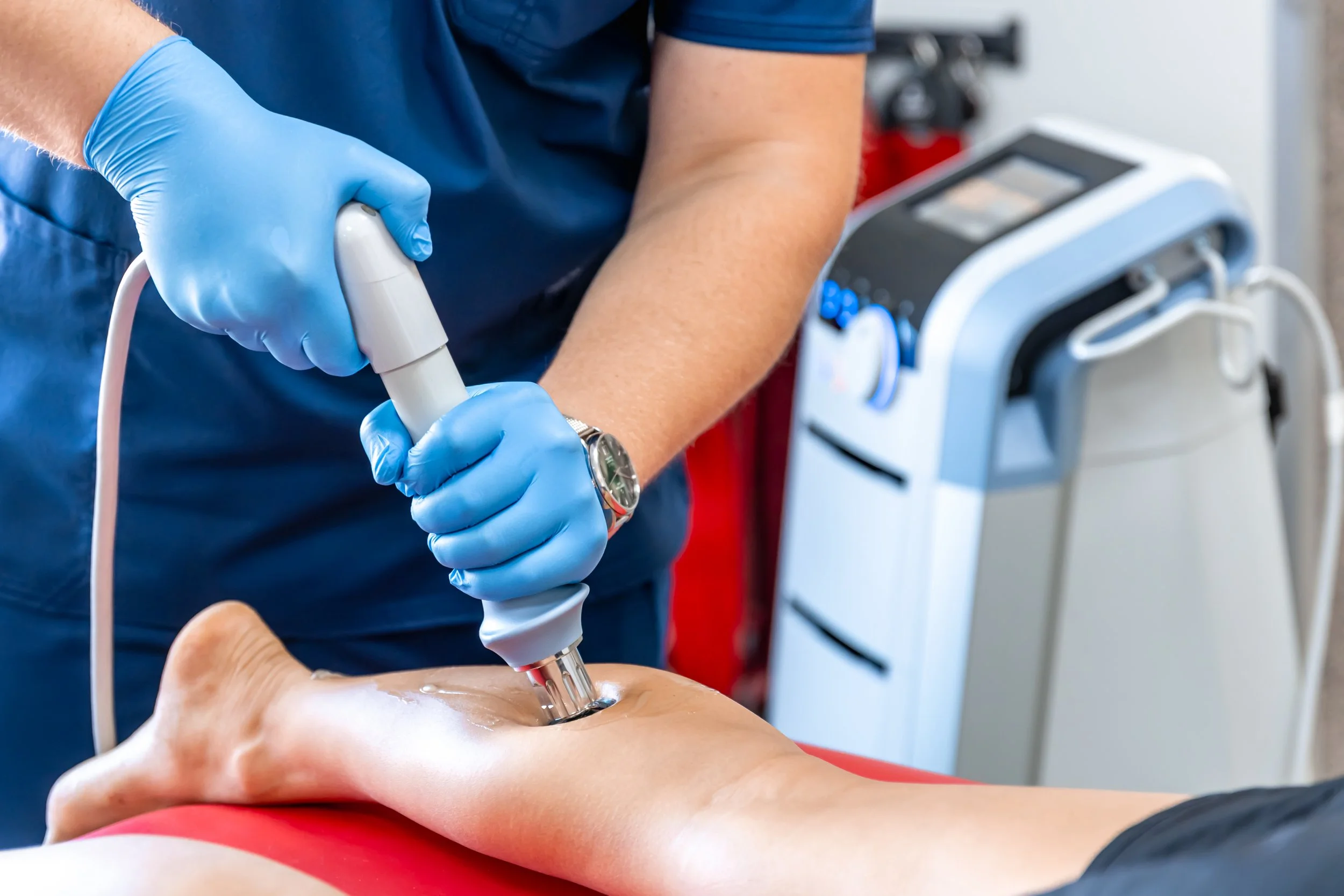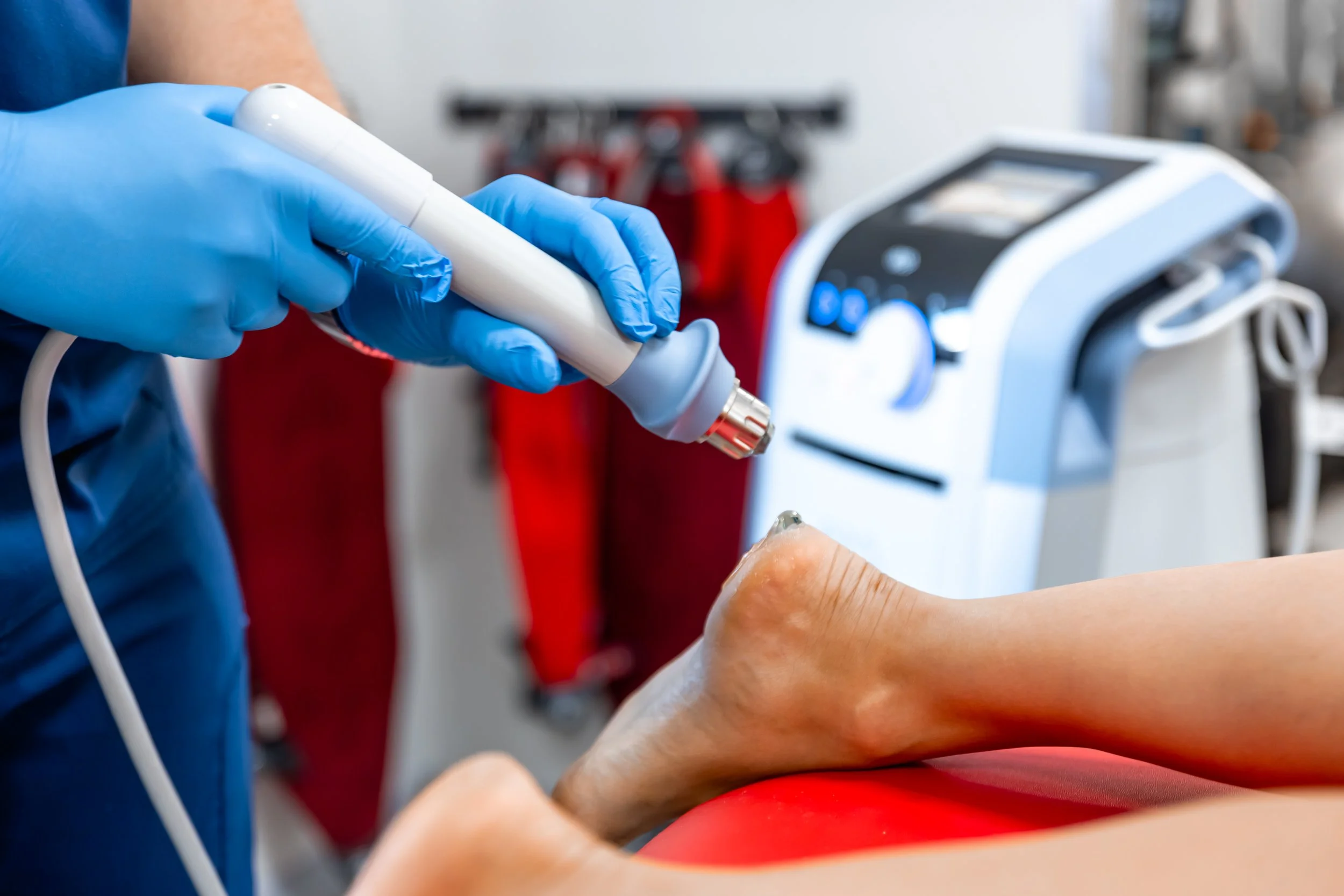Exploring the Potential of Extracorporeal Shockwave Therapy in Physiotherapy
Extracorporeal Shockwave Therapy (ESWT) has become a popular treatment in recent years. It is especially useful for musculoskeletal disorders. But where did it all start? Interestingly, its origins go back to the early 1980s. It was first used to break down kidney stones. From there, ESWT has expanded its uses, finding a place in orthopedics and physiotherapy.
What is ESWT?
So, what exactly is ESWT? In simple terms, it is a non-invasive treatment. It uses shock waves to treat painful muscles and joints. "Extracorporeal" means the treatment happens outside the body. A therapist directs these shock waves through the skin to the injured area. This method has gained attention for treating chronic injuries. But how can a therapy originally used for kidney stones help with muscle and joint pain?
How Does ESWT Work?
At its core, ESWT works by sending shock waves to the affected area. These waves are not electric but are mechanical pulses. They stimulate the body's natural healing processes. How does this happen? The shock waves cause tiny injuries, or micro-trauma, to the tissue. This micro-trauma prompts the body to start repairing itself.
One key action of these shock waves is called neovascularization. What is neovascularization? It's the process of forming new blood vessels. Why is this important? New blood vessels improve blood supply to the area. Better blood flow means more oxygen and nutrients, which help the injured tissues heal faster.
Another benefit of ESWT is boosting collagen production. Collagen is a protein found in skin, bones, and connective tissues. It's essential for repairing and strengthening tendons and ligaments. By increasing collagen production, ESWT helps rebuild the injured tissues' structural integrity.
Wang et al. (2002) in their studies have shown how ESWT enhances levels of growth factors like TGF-beta1 and IGF-I. These growth factors are crucial for tissue repair. Isn't it fascinating how a non-invasive therapy can trigger such complex healing processes?
Clinical Applications of ESWT
Tendinopathies
Tendinopathy is a common condition treated with ESWT. This term refers to tendon injuries that involve inflammation or degeneration. ESWT is particularly effective for chronic cases. These are cases where traditional treatments have failed. For instance, a study by Rompe et al. (1998) found significant improvements in tendon structure and function after ESWT.
Bone Healing
Shockwave therapy is also useful in accelerating bone healing. It can help with delayed bone union or nonunion. Haupt et al. (1992) reported positive effects of shock waves on fracture healing. This suggests that ESWT can be a valuable addition to traditional bone healing methods.
Soft Tissue Injuries
ESWT has been successfully applied to various soft tissue injuries. This includes muscle strains and ligament sprains. By promoting cell regeneration and enhancing tissue repair, ESWT helps reduce recovery time. Studies like those by Waugh et al. (2015) support these findings.
Enhancing Blood Flow and Reducing Pain
One of the remarkable benefits of ESWT is its ability to enhance the production of nitric oxide. Nitric oxide is crucial for vasodilation, which is the widening of blood vessels. This process improves blood flow to the affected area, ensuring better delivery of oxygen and essential nutrients needed for tissue repair. Enhanced blood flow also facilitates the removal of metabolic waste products from the site of injury, further supporting the healing process.
Additionally, ESWT has been shown to reduce the sensitivity of nerve endings. This reduction in nerve sensitivity leads to a decrease in pain perception, making ESWT a valuable treatment for chronic pain conditions. By targeting the nerve endings, ESWT helps interrupt the pain cycle, providing significant relief for patients.
Aesthetic Applications: Post-Liposuction and Cellulite Treatment
Beyond its applications in musculoskeletal disorders, ESWT is also gaining recognition in the aesthetic field. It is increasingly used to promote healing and improve tissue quality post-liposuction and for the treatment of cellulite.
Post-Liposuction Healing
After liposuction, patients often experience tissue irregularities and slow healing. ESWT can enhance the quality of tissue healing by promoting blood flow and stimulating the production of collagen. This results in smoother and firmer skin, improving the overall aesthetic outcome of the procedure. The enhanced blood circulation also helps in reducing post-operative swelling and accelerating recovery.
Cellulite Treatment
Cellulite affects approximately 90% of women, presenting as dimpled or lumpy skin, primarily on the thighs and buttocks. While it is a common condition, many seek treatments to improve its appearance. ESWT offers a promising solution by optimizing tissue health. The therapy improves blood flow, enhances the removal of waste products, and potentially disrupts the fibrous septae between fat cells, which contribute to the dimpled appearance of cellulite.
Benefits of ESWT in Physiotherapy
Coupled with a good exercise regimen, ESWT can significantly improve the aesthetic of the affected tissue. Regular treatments can lead to smoother, more even skin texture, and better overall skin health. The combination of improved blood flow, waste removal, and structural changes in the tissue makes ESWT a valuable tool in the fight against cellulite.
Non-invasiveness and Safety
One of the main advantages of ESWT is its non-invasive nature. This is a significant benefit over surgical options. Non-invasive means fewer risks. There is less chance of infection or long recovery periods. The safety of ESWT is well-documented. Minimal adverse effects have been reported.
Efficacy in Treatment
Numerous studies have shown that ESWT is effective in treating many musculoskeletal disorders. For instance, Vahdatpour et al. (2014) demonstrated the therapy's effectiveness. They found that ESWT improved shoulder mobility and reduced pain in patients with frozen shoulder.
Cost-Effectiveness
While ESWT equipment can be costly initially, it has long-term benefits. It reduces other medical costs, such as those associated with surgery or long-term medication use. This makes ESWT a cost-effective treatment option.
Practical Considerations in ESWT
Treatment Protocols
The success of ESWT depends on following proper treatment protocols. This includes the correct dosage and frequency of shock waves. Rompe et al. (2015) noted that combining ESWT with specific exercises can enhance treatment outcomes. For example, plantar fascia-stretching can improve results.
Patient Selection
Choosing the right patients for ESWT is crucial. Factors such as the type and severity of the injury should be considered. The patient's overall health and previous treatments are also important. Effective patient selection helps achieve the best results with ESWT.
Extracorporeal Shockwave Therapy represents a significant advancement in physiotherapy. It offers an effective, safe, and non-invasive treatment for various musculoskeletal conditions. As research continues, the potential applications of ESWT are likely to expand. This will further solidify its role in physiotherapy practices worldwide. Whether dealing with chronic tendinopathy, delayed bone healing, or soft tissue injuries, ESWT provides a promising alternative to more invasive therapies. Its benefits include non-invasiveness, safety, efficacy, and cost-effectiveness. This makes ESWT a valuable tool in modern physiotherapeutic care.
Could ESWT be the right treatment for you? If you are dealing with a chronic injury, it might be worth discussing with your healthcare provider.
References
Haupt G, Haupt A, Ekkernkamp A, Gerety B, Chvapil M. Influence of shock waves on fracture healing. Urology. 1992 Jun;39(6):529-32. doi: 10.1016/0090-4295(92)90009-l. PMID: 1615601.
Rompe JD, Kirkpatrick CJ, Küllmer K, Schwitalle M, Krischek O. Dose-related effects of shock waves on rabbit tendo Achillis. A sonographic and histological study. J Bone Joint Surg Br. 1998 May;80(3):546-52. doi: 10.1302/0301-620x.80b3.8434. PMID: 9619954.
Rompe JD, Furia J, Cacchio A, Schmitz C, Maffulli N. Radial shock wave treatment alone is less efficient than radial shock wave treatment combined with tissue-specific plantar fascia-stretching in patients with chronic plantar heel pain. Int J Surg. 2015 Dec;24(Pt B):135-42. doi: 10.1016/j.ijsu.2015.04.082. Epub 2015 May 1. PMID: 25940060.
Wang FS, Yang KD, Chen RF, Wang CJ, Sheen-Chen SM. Extracorporeal shock wave promotes growth and differentiation of bone-marrow stromal cells towards osteoprogenitors associated with induction of TGF-beta1. J Bone Joint Surg Br. 2002 Apr;84(3):457-61. doi: 10.1302/0301-620x.84b3.11609. PMID: 12002511.
Waugh CM, Morrissey D, Jones E, Riley GP, Langberg H, Screen HR. In vivo biological response to extracorporeal shockwave therapy in human tendinopathy. Eur Cell Mater. 2015 May 15;29:268-80; discussion 280. doi: 10.22203/ecm.v029a20. PMID: 25978115.
Vahdatpour B, Taheri P, Zade AZ, Moradian S. Efficacy of extracorporeal shockwave therapy in frozen shoulder. Int J Prev Med. 2014 Jul;5(7):875-81. PMID: 25104999; PMCID: PMC4124565.





